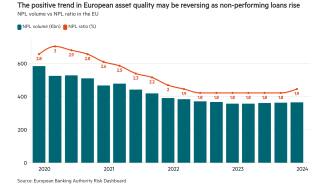The most striking achievement of the successful Danish economy probably relates to labour market dynamism. The unemployment rate has been brought down from a high level and is now among the lowest in Europe.
The Danish labour market model was dubbed “flexicurity” a few years ago, a combination of flexibility and social security. How is it possible to blend labour market flexibility, as in the Anglo-Saxon model, with a generous unemployment benefit system, as in the continental European model, while maintaining high job security and satisfaction levels?
The labour market model is based on three pillars. First, moderate employment protection makes it easy for firms to adjust their workforce to new conditions – easy to fire, easy to hire. Second, a generous unemployment benefit system protects job losers against significant drops in income, especially at the lower end of the income scale, where job insecurity is also highest. Third, active labour market policies are used extensively to bring relevant qualifications to the unemployed and to test availability for work.
The model reflects the well-known political priority in Scandinavian countries of a relatively equal income distribution, and consists of a fine balance between security and incentives to work that is adjusted continuously according to economic conditions. It relies on a political consensus on the counterbalancing elements of the system, and is founded on a long tradition, in which wages and working conditions are set without government interference.
The model represents a mixture of deliberate choices and historical coincidences. The first two pillars, employers’ right to hire and fire, and unemployment insurance, were laid in agreements 100 years ago, whereas active labour market policies were shaped through a series of reforms in the 1990s with strong elements of both sticks and carrots.
The reforms consist of shorter duration unemployment benefits but no cut in the replacement ratio of benefits relative to wages except for young people, tougher work-availability requirements and greater use of active labour market policies, including training and job seeking. The overall effects of these reforms are remarkable: the quasi-elimination of youth unemployment and a huge fall in structural unemployment.
Winds of change
Denmark’s economy has responded appropriately to globalisation. The labour market model has facilitated a move up the value chain by accommodating the closing of entire industries, such as textiles. However, fundamental adjustments are needed to face the pressure from globalisation, ageing and immigration.
The system is not directly applicable in other countries but, although it works as an entity finely balancing equality with efficiency, this does not mean that single elements are of no relevance. An example is the combating of youth unemployment, which still plagues numerous European countries, through measures to force persons under 26 years old into either education or work by ensuring they receive no unemployment benefits while inactive, except for short periods.
In general, moderate employment protection paired with strong requirements for work-availability have only been politically feasible through a generous, safety net resulting in a high rate of taxation. However, the Danish experience is that generosity need not be an obstacle to dynamism.
Nils Bernstein is chairman of the board of governors of the Danish Central Bank.











